Human beings have always been fascinated with reaching for the sky. Thousands of years ago, the Great Pyramid of Giza stood as the tallest structure in the world at 146 metres. Today, the Burj Khalifa in Dubai soars over 160 times higher. That’s like stacking three Shards (London’s tallest building) on top of each other – and still needing a little extra.
These supertall towers represent ambition, creativity, and national pride. For many immigrants, these skyline giants become everyday landmarks – a backdrop to building new routines in a new country.
At Remitly, we understand that these landmarks aren’t just something to look at; they become part of your everyday life abroad. In this guide, we’ll delve into the world’s tallest buildings and structures, explore how they’re even possible, and peek into the future of vertical living.
What defines ‘tallest’
When people talk about the tallest structures in the world, they don’t always mean the same thing. Some are skyscrapers packed with offices and flats, while others are towers, masts, or even bridges. So, what exactly counts as the tallest?
Buildings versus structures
A building is somewhere people live, work, or shop. A structure, on the other hand, might be a broadcasting tower, bridge, or monument. You won’t find a flat to rent inside Tokyo Skytree – but imagine the view if you could.
The Council on Tall Buildings and Urban Habitat (CTBUH) tracks height by measuring architectural top, highest occupied floor, roof height, and tip height—including spires and antennas.
That’s why the tallest structure isn’t always the tallest building. A broadcasting tower might beat a skyscraper in tip height, but no one’s living or working at the top of an antenna.
The world’s tallest buildings
Skyscrapers define modern skylines, and few towers rise far above the rest – both in height and ambition.
Burj Khalifa, Dubai (828 metres)
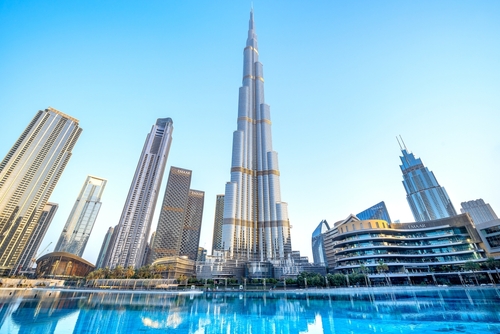
Still the global champion, the Burj Khalifa is more than just a skyscraper – it’s a statement of ambition. With 163 floors, high-speed lifts, and views that stretch into the desert, it offers an experience as breathtaking as its design. By night, it becomes a glowing beacon with its light show visible across the Dubai skyline.
For newcomers to Dubai, it quickly becomes part of daily life – whether you’re meeting friends nearby at Dubai Mall, catching a glimpse of the spire from a taxi, or showing visitors the view from the top.
Merdeka 118, Kuala Lumpur (679 metres)
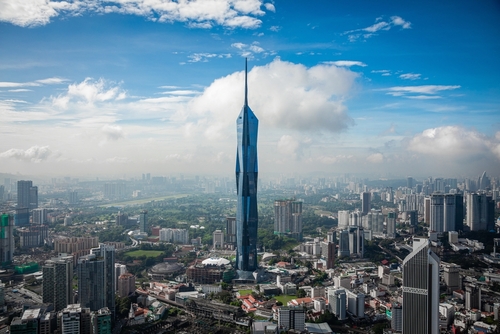
The newest member of the supertall club, Merdeka 118 rises to 678.9 metres, making it the second-tallest building in the world. Inside, you’ll find offices, residences, and a sky-high observation deck.
Shanghai Tower, China (632 metres)
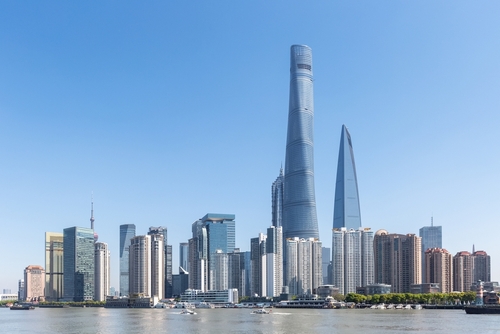
Shanghai’s twisting giant looks like it’s been sculpted by the wind. Its spiral shape cuts wind loads, making it both elegant and practical. Inside, you’ll find offices, hotels, and cultural spaces, as well as the world’s highest observation deck.
Residents in Shanghai often describe the tower as a reminder of the city’s unstoppable energy – where both tradition and cutting-edge design meet.
Abraj Al-Bait Clock Tower, Saudi Arabia (601 metres)
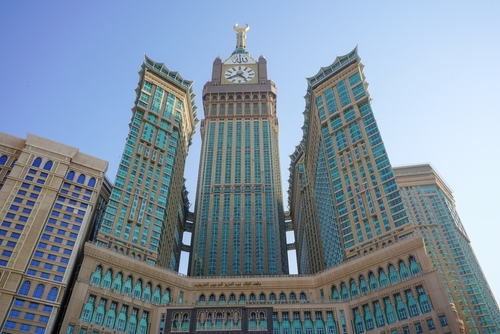
Towering over Mecca, this monumental complex holds deep significance. Its massive clock face is visible from 25 kilometres away, making it one of the most recognisable landmarks in the Islamic world. Inside, it houses hotels and shopping areas designed to support the millions of pilgrims who visit each year. It’s a powerful example of how architecture can blend spiritual meaning and modern function.
Ping An Finance Center, China (599 metres)
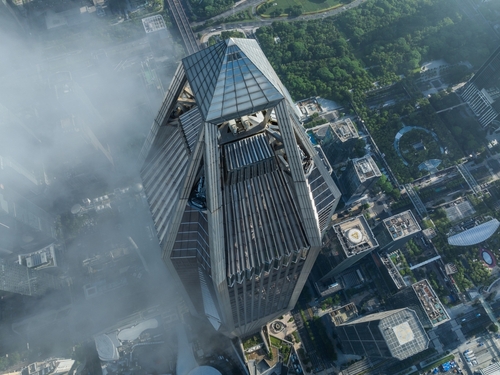
In Shenzhen, the Ping An Finance Center reflects both the city’s booming economy and modern outlook – serving as a hub for finance, retail, and hospitality.
For immigrants living in China’s ‘Silicon Valley’, the Ping An Center isn’t just an office tower; it’s a symbol of opportunity and innovation. It also features one of the world’s highest observation decks.
The top five might get the spotlight, but the next contenders are equally impressive and worth a visit.
- Lotte World Tower, Seoul, South Korea: 555 metres, home to shops, offices, luxury residences, and one of the highest observation decks.
- One World Trade Center, USA: 541 metres, a powerful symbol of resilience and renewal in New York.
- Guangzhou CTF Finance Center, China: 530 metres, home to offices, apartments, and one of the fastest elevators in the world.
- Tianjin CTF Finance Center, China: 530 metres, designed with a sleek, modern exterior and high-end mixed-use spaces.
- CITIC Tower, China: 528 metres, nicknamed ‘China Zun’ for its silhouette, inspired by ancient ceremonial vessels.
The tallest buildings and structures on each continent
Every continent has its own record-breakers, from skyscrapers to towers and bridges. For newcomers, these landmarks often double as cultural icons and handy navigation points when learning a new city.
Tallest buildings and structures in Asia
Asia leads the race with the Burj Khalifa (828 metres) in Dubai and the Shanghai Tower (632 metres) in China. But it’s also home to record-breaking structures like the Tokyo Skytree (634 metres), the tallest broadcasting tower in the world. Together, they make Asia the undisputed hub of supertall design.
Tallest buildings and towers in North America
North America’s tallest building is One World Trade Center in New York (541 metres), a symbol of resilience. However, don’t forget the CN Tower in Toronto (553 metres), which for decades held the record as the tallest free-standing structure. Add Chicago’s Willis Tower (442 metres), and you have a continent where both buildings and structures have shaped identity.
Record-breaking buildings and towers in South America
Chile’s Gran Torre Santiago (300 metres) is the tallest building in South America, offering sweeping views of the Andes. It shares a complex with the Torre Costanera (174 metres), another standout on Santiago’s skyline. While South America may not yet rival other continents in height, structures like Brazil’s Mirante do Vale still reflect the region’s steady vertical growth.
Tallest skyscrapers and structures in Europe
Europe’s tallest building is Russia’s Lakhta Center (462 metres), known for its flame-inspired design. The continent is also home to the Millau Viaduct in France (343 metres) – the tallest bridge in the world – and London’s Shard (310 metres), which defines the UK skyline. While Europe may not match Asia’s heights, its blend of architectural styles and engineering feats makes it a standout on the global stage.
Tallest buildings and iconic towers in Africa
Africa’s tallest building is Egypt’s Iconic Tower, expected to reach 393 metres once completed. In South Africa, Johannesburg’s Carlton Centre (223 metres) remains a longstanding city landmark. Other notable structures include Nairobi’s Britam Tower (200 metres) and the Great Pyramid of Giza – once the tallest structure in the world for over 3,800 years.
Tallest structures in Australia and Oceania
Oceania’s tallest building is Australia’s Q1 Tower (322 metres), followed by Melbourne’s Australia 108 (316 metres) and Eureka Tower (297 metres). In terms of structures, the Sydney Tower Eye (309 metres) offers panoramic views and is one of Sydney’s most visited landmarks. This balance of towers and observation structures reflects Australia’s love of both coastal life and city skylines.
The engineering marvels behind extreme heights
From bridges that soar above valleys to skyscrapers packed with clever safety systems, tall structures are about making the impossible both practical and safe.
Bridges and other record-breakers
The Millau Viaduct in France holds the title of the world’s tallest bridge, with piers that rise 343 metres – taller than the Eiffel Tower. It’s a reminder that ‘tall’ doesn’t always mean a skyscraper; sometimes, it’s the support structure beneath an engineering marvel.
Other examples include Russia’s Russky Bridge (320 metres) and Japan’s Akashi Kaikyō Bridge – both among the tallest suspension bridges in the world.
Building strong foundations and moving people
It all starts underground. Engineers dig deep foundations anchored into bedrock to keep supertall buildings stable. Above ground, structural systems like bundled tubes and outriggers help distribute weight and allow the towers to sway safely in high winds.
But height brings another challenge: elevators. Imagine living on the 120th floor and waiting for a lift. That’s why many supertalls rely on innovations like double-deck elevators, sky lobbies, and even experimental systems that move not only up and down – but sideways too.
Safety and peace of mind
Skyscrapers are designed with multiple layers of safety. Many include:
- Pressurised stairwells to keep smoke out
- Refuge floors as safe havens in emergencies
- Reinforced escape routes with clear evacuation systems
When you’re hundreds of metres above the ground, it’s these systems that let you sip your coffee, enjoy the view, and forget that the building is gently swaying in the wind.
The future of tall construction
So what’s next? Taller, smarter, and greener buildings are already on the way.
The rising giants
The Burj Khalifa still holds the crown, but its reign may soon end. Around the world, ambitious projects are rising fast – and could soon reshape the global skyline.
- Jeddah Tower, Saudi Arabia: Planned to exceed 1,000 metres and become the first kilometre-high building.
- Merdeka 118, Malaysia. Completed at 678 metres, now the world’s second tallest.
- Greenland Jinmao IFC, China: Another supertall in China’s booming skyline, projected around 500 metres.
- Dubai Creek Tower, UAE: Designed to outshine the Burj, though construction is currently paused.
- Lakhta Center 2, Russia: Planned at 703 metres, set to become Europe’s tallest.
Sustainable design and vertical living
Skyscrapers of the future aren’t just tall, they’re also green. Many already include solar panels, rainwater recycling systems, and smart glass to keep interiors cool.
Also, by building upwards instead of endlessly outwards, skyscrapers can help reduce sprawl and save land. Vertical living is about making urban life more convenient, connected, and sustainable.
Theoretical limits and future possibilities
Could we one day live in a mile-high tower? With today’s materials, it’s theoretically possible – though incredibly costly. Future innovations – like carbon fibre, ultra-strong alloys, or even space elevators – could take us even higher. In the end, the sky might not be the limit after all.
Economic and cultural impact of supertall buildings
Skyscrapers shape economies and cultures, too. These massive towers attract investment, tourism, and global business. They can transform neighbourhoods into financial hubs and put cities on the international map.
Just think how the Burj Khalifa helped turn Dubai into a global destination almost overnight. These structures also become cultural icons – appearing in films, postcards, and Instagram feeds that circle the globe.
Engines of urban growth
When a city builds a supertall, it often sets off economic ripple effects. New businesses move in, tourism rises, and entire districts take shape around these towers.
In cities like Shanghai and Kuala Lumpur, skyscrapers have helped drive growth in retail, hospitality, and transport – shaping how both locals and newcomers experience daily life.
A global race for the skies
Supertall buildings aren’t built in isolation; they’re part of a global competition. Cities like Dubai, Shanghai, and New York race to outdo each other – chasing records that can change overnight.
The planned Jeddah Tower in Saudi Arabia, set to surpass the Burj Khalifa, is one example of how ambitious these projects have become.
Icons in popular culture
Supertalls also live in our imagination. They star in Hollywood films, music videos, and video games – sometimes getting destroyed on-screen in epic action sequences, other times serving as backdrops for romance or adventure.
For example, the Empire State Building in New York might not be the tallest anymore, but thanks to King Kong, it remains one of the most recognisable towers on Earth.
Reaching new heights
From the pyramids to today’s megatall skyscrapers, humanity’s obsession with height has always been about more than size. These structures show ambition, creativity, and the power of people working together, often across borders and cultures.
If you get the chance, step inside one of these towers. Take the lift, feel your ears pop, and see the world spread out below. These sky-high wonders prove that when humans dream big, we dream upwards.
What Are the Tallest Buildings and Structures That Might Be Visible During Finland’s Independence Day Celebrations?
During Finland’s Independence Day celebrations, iconic structures like the Helsinki Cathedral and the Majakka lighthouse become focal points of admiration. As festivities unfold, it’s vital to note that “finland independence day 2025 essential information revealed” highlights the rich history and architectural marvels that enhance this significant national holiday.
FAQ
How tall can buildings theoretically get?
With today’s materials, experts believe we could build up to about one mile high – roughly 1,600 metres. But that comes with enormous engineering, safety, and cost challenges. As technology advances, with stronger materials and smarter energy systems, that limit may continue to rise.
What’s the difference between the world’s tallest building and tallest structure?
The tallest building is something people can live or work in – it has usable floors and is designed for daily life. The tallest structure, on the other hand, might be a broadcasting tower, bridge, or pylon – still tall, but not meant for living or working. Think Burj Khalifa versus Tokyo Skytree.
How do elevators work in buildings over 100 floors?
In supertall buildings, elevators need to be fast, efficient, and carefully planned. Most use double-deck elevator cars (with two cabins stacked on top of each other), plus sky lobbies where passengers transfer to another lift mid-way up. Some systems even use advanced cable technology to reduce wait times and improve energy efficiency. A few experimental models can now travel sideways as well as up and down, hinting at what’s possible in the future.
Are supertall buildings safe during earthquakes?
Yes – today’s supertalls are built with safety in mind. They’re designed to flex rather than crack, using materials and structures that absorb seismic energy. In earthquake-prone areas, even the foundation is engineered to shift slightly without damaging the building above.
How long does it take to construct a supertall building?
Constructing a supertall typically takes five to seven years. Larger or more complex towers – especially mixed-use ones – may take even longer, depending on design, location, and materials.
What materials are used in the world’s tallest buildings?
Tall buildings use strong materials like steel and reinforced concrete, often paired with high-performance glass and sustainable composites.